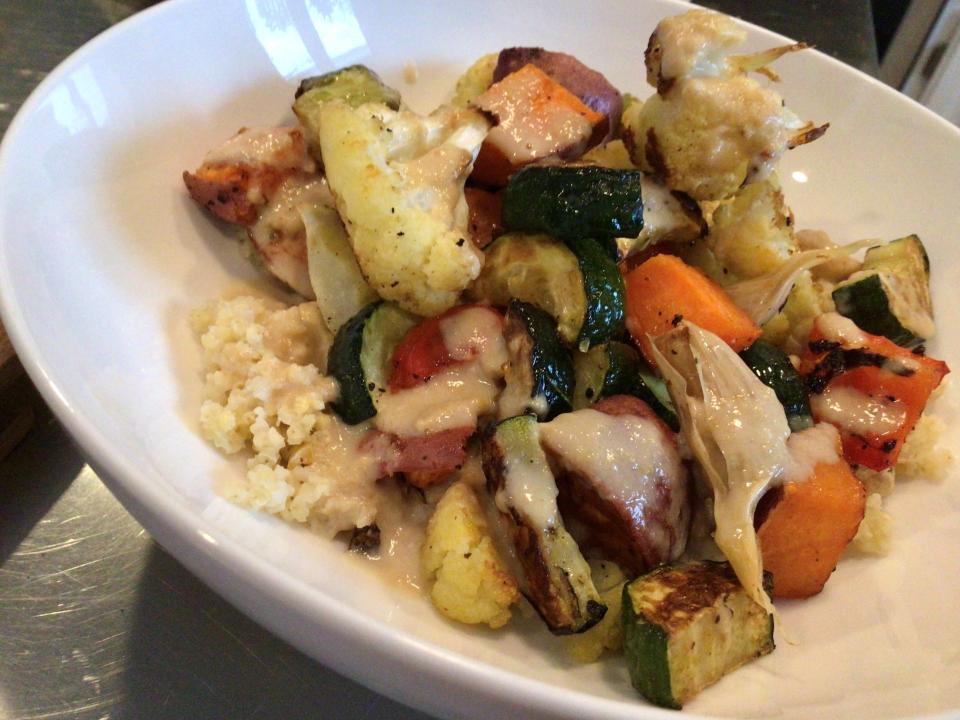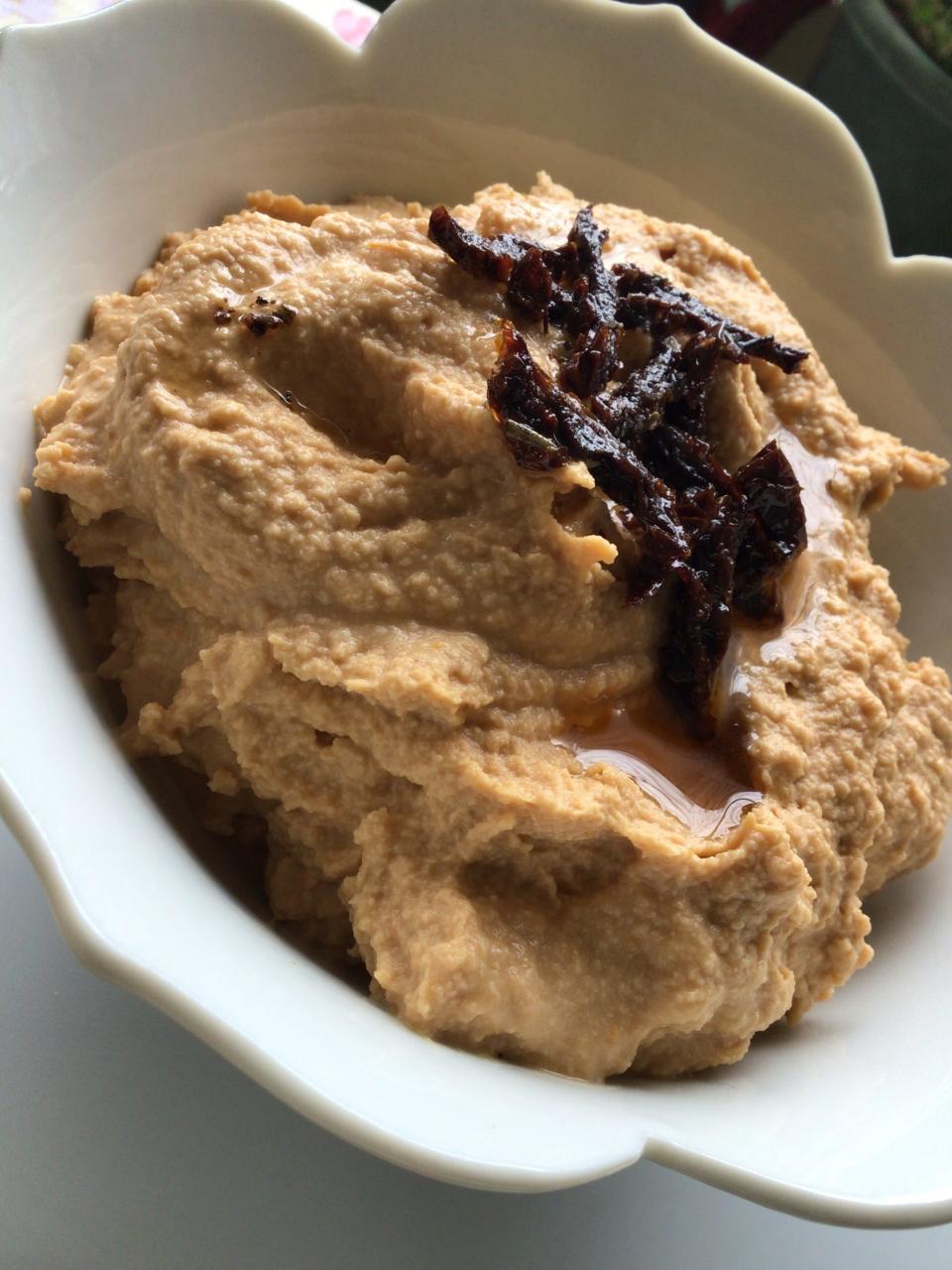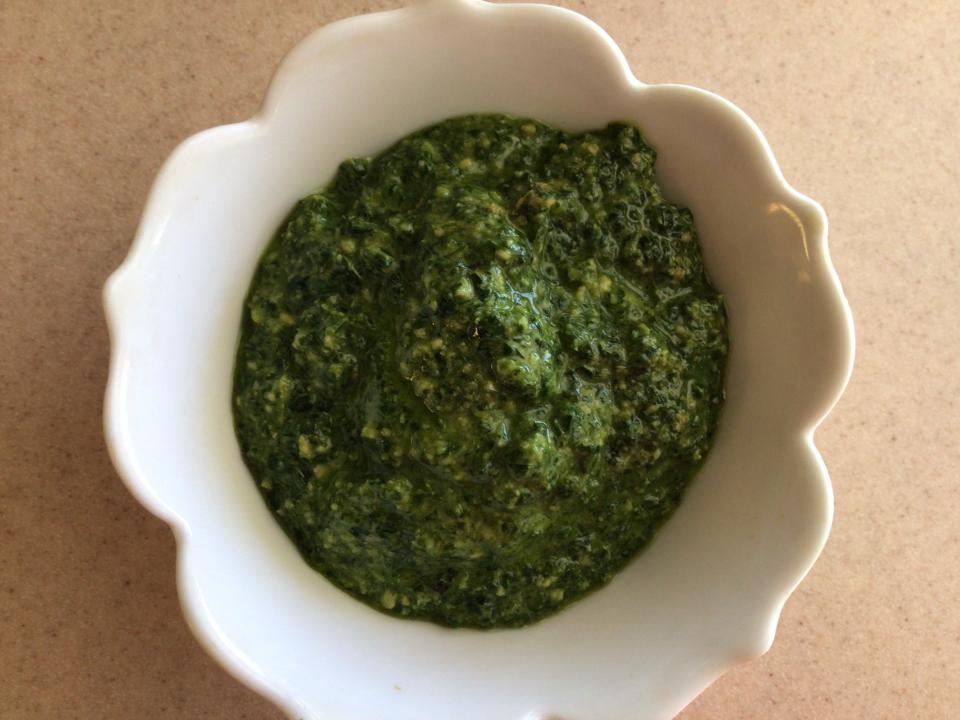Visitor from England offers thoughts on 'mindful veganism' and a few favorite recipes

I am here in the United States, from England, for three months visiting family and staying with a friend in Coralville.
I love Iowa City and all that it offers. The choices for vegans and those of an ethical persuasion are plentiful. It’s easier to be mindful when the culture around us is supportive and conducive to practice.
I practice mindfulness in the Plum Village Zen tradition of Thich Nhat Hanh, a Vietnamese monk for almost 80 years and author of more than 100 books on engaged Buddhism and mindful living. He is known worldwide as being the person responsible for popularizing the Buddhist teachings on mindfulness in the West and making them applicable to present-day life.
He was a poet, peace activist, and an exemplar of what it means to live a life of compassion and meaning. Thay (teacher), as he is known to his students, took his last breath on Jan. 22, aged 95.
I found this spiritual path when I was researching for my Ph.D on mindfulness in 2008. I had already been practicing Buddhism for some years and went on a retreat in 2010 with Thay in Nottingham, England.
I was introduced to the Five Mindfulness Trainings, which offer us ethical and spiritual guidance to find greater personal happiness through mindful living. In a formal ceremony at the end of that retreat, I took a vow to live by these guidelines and then went on to receive lay ordination in 2016.
The first of the five trainings is Reverence for Life. A vegan lifestyle is part of my commitment to this and my intention to live mindfully, with awareness of the impact of my consumption on myself, other living beings and the Earth.

As such, I choose organically produced food with as little packaging as possible, as I know that helps the Earth to maintain her equilibrium. She too, is a living, breathing organism, the source of all life, and so if I take care of her, I am helping to take care of all. I know that by committing to buy organic food, for example, that I am supporting the Earth to regenerate and redress the imbalances caused by decades of toxic, intensive, monoculture farming.
To be mindful is to be present, and just as we can offer our presence to those around us, we can also offer our presence to the food as we shop, prepare and eat it. Mindful vegetable chopping, eating and washing dishes all become mindfulness practices and an expression of loving kindness and gratitude. Living in this appreciative and mindful way, we consume less and close the gap between our secular and spiritual lives. They become one.
Over the years I have simplified my diet considerably, and this process has been in conjunction with and in support of my mindfulness practice. Cooking vegan does not have to be laborious, but it does usually require a little re-education about what foods are available and how to cook and use them.
When we consume mindfully, we consume less, and we make more ethical choices because we see the consequences of our choices. For me, this has been a steady process of education and refinement.
The provenance of my food is paramount. I need to be as certain as possible that the workers who produce the food are treated well, the carbon footprint of the food is as low as possible, and the food production is sustainable.
This means buying simple whole foods rather than convenience or manufactured foods, and this means less packaging, too. I don’t want to eat vegan "bacon" or a "synthetic meat" burger. I am a purist, I guess.
In the UK, I can do all of this quite easily, as I have spent many years educating myself. I have subscribed to a publication for many years called The Ethical Consumer. It rates companies and products on environmental, social and financial criteria as well as transparency of supply chains.
Being in the U.S., I am having to educate myself afresh about retailers and products. My preferred grocery stores are New Pioneer and Natural Grocers, which tick multiple boxes for me.
They vet their suppliers so that I have confidence in what I am purchasing, and fruit and vegetables come without unnecessary packaging. I have also found Green America, a national body that publishes recommendations and research.
Of course, I am still a work in progress, practicing every day to help the theory become manifest, helping to save the planet. I have moments of forgetfulness, when I am on autopilot and lose my connection with the present moment, but each week, month, and year these become fewer. The reality is that if I live to be 100, I will still be practicing!
Below is my offering, simple recipes with interchangeable ingredients and dressings. I would usually cook enough for two meals and enjoy it cold the second day. So these quantities will give two servings; simply increase quantities as required.

Use any grain (or pasta) of your choice and any combination of vegetables; a good rule of thumb is to use some root vegetables and greens. I simply use what is at hand. Remember, the flavors of the vegetables intensify with roasting, and the volume shrinks as moisture is drawn from them in the cooking process. This makes them even more delicious!
I have measured the ingredients below, but feel free to be creative and adapt them as required. I usually take the approach that “cooking is an art; baking is a science!”
Roasted Vegetables and Cashews with Millet and Tahini Dressing
Yield: 2-4 servings
8 C vegetables*:
1 small, sweet potato (approx. 8 oz.), unpeeled, cut into ¾-inch chunks
1 medium zucchini, halved lengthwise and cut into ½-inch slices
12 Brussels sprouts, trimmed and halved
½ small cauliflower cut into medium-sized florets (approx. 4 C)
1 small red pepper, cut into ½-inch slices
1 medium onion, cut into wedges
6-8 medium cloves of garlic, whole, with skin on
3-4 Tbsp. oil for roasting (olive or coconut)
Salt and pepper to taste
Sprinkling of herbs (optional)
¼ C raw cashew nuts
½ C millet (if using brown rice, quinoa, buckwheat or another grain, quantities may vary)
2 C water
1. Set the oven to 400 degrees F.
2. Wash and chop the vegetables. Place on a large baking sheet or roasting tin, sprinkle with olive oil (if using coconut oil, melt some on the tray first). Add salt and pepper; toss to coat the vegetables in the oil. Roast on the top oven rack for 30-35 minutes, checking on them periodically.
3. Add the millet to boiling water and cook for 20 minutes.
4. About 10 minutes before the vegetables are ready, add the cashews (and tofu, if using).
5. Drain the millet. Serve with the roasted vegetables and Tahini dressing.
(*Alternatives to the listed vegetables: tofu, eggplant, fennel, tomatoes, carrots, beets, mushrooms; all roast well. Chop to size depending on density and their cooking time.)
Tahini Dressing
Yield: approx. 1 C
¼ C tahini
¼ C white miso
1 small garlic clove
½ C water (approx.)
Pepper to taste (optional)
Place all ingredients in a blender and process until smooth. More or less water may be required. It should be a pourable consistency.
Sundried Tomato Hummus*
Yield: 2 C
½ C dried chickpeas
3 sun-dried tomatoes
1½ C water
Juice of half a lemon (2 Tbsp.)
1 rounded Tbsp. tahini
1 medium garlic clove
¼ C olive oil
½ tsp. salt
Grind of black pepper
Pinch to ⅛ tsp. cumin
½ C chickpea broth
1. Soak the chickpeas in cold water overnight.
2. Drain the chickpeas and transfer to a small pan; cover with 1½ C fresh water. Add whole sun-dried tomatoes. Bring to a boil, then reduce to simmer, covered, for approximately 20 minutes. Cool. (This will result in 1½ C cooked chickpeas.) Drain and reserve the broth.
3. Put all of the ingredients into a high-speed blender, using enough chickpea water to just cover the ingredients. Blend until the mixture is completely smooth. Add more fluid or olive oil, if needed. Garnish with sun-dried tomato slices, if desired.
The mixture usually thickens a little after refrigerating; more liquid can be stirred in at any time.
*This recipe can be used to prepare plain hummus. Omit the sun-dried tomatoes and increase salt to ¾ tsp.

Kale Pesto
Yield: ½ C
2-3 medium curly kale leaves, stems removed (3 C packed)
⅓ C olive oil
2 Tbsp. nutritional yeast
3 Tbsp. cashews or pine nuts, sunflower or pumpkin seeds
½ tsp. salt (I use pink Himalayan)
A grind of black pepper
Splash of water (optional)
Blend all of the ingredients together to desired consistency (but not pureed).
Jan Goss trained as a home economist and owned a Michelin-listed restaurant in Lancashire, England.
For questions or comments regarding the Vegan Community of Eastern Iowa, email veganeasterniowa@gmail.com or visit www.veganeasterniowa.org. Everyone is welcome to join the VCEI on Facebook and MeetUp.
This article originally appeared on Iowa City Press-Citizen: Visitor from England shares a few favorite vegan recipes

